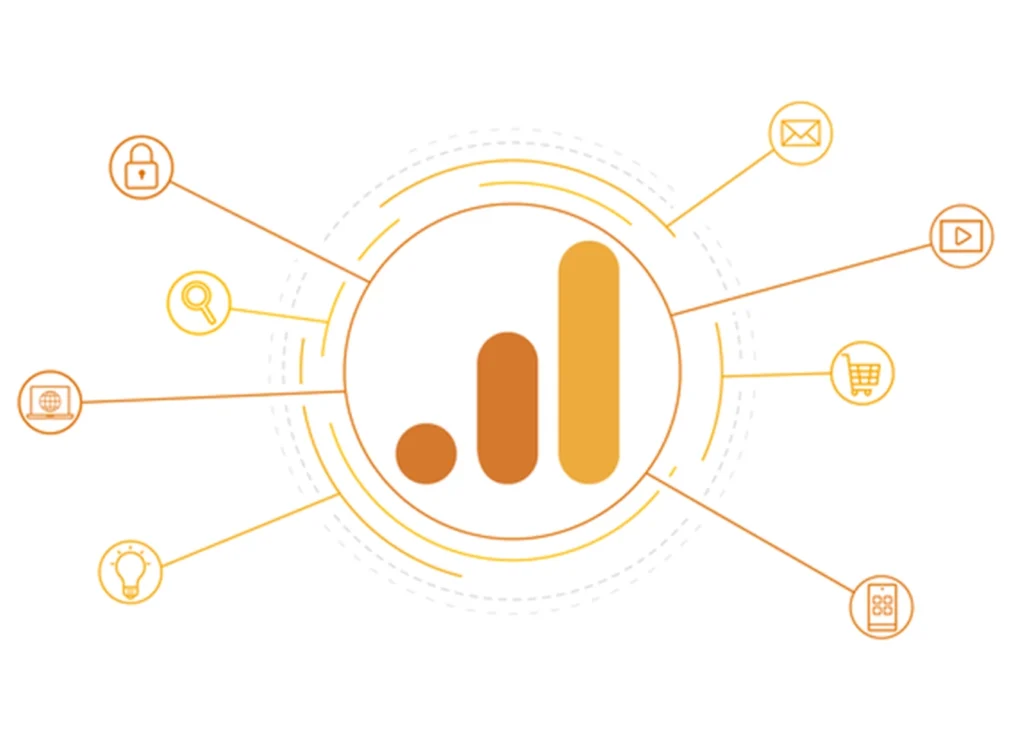We’ve found that the newest version of google analytics has a few people confused. This is where our SEO experts come in to help explain what Google Analytics 4, or GA4 for short, is.
Our SEO Director, Jon Goodey, explains that GA4 allows clients to track user interactions within mobile and single-page applications by using Firebase Analytics on the Google Cloud Platform. Not only that but GA4 attempts to correct data that has been corrupted by cookie restrictions, incorporates machine learning to help fill in the gaps where user consent is either not present or otherwise difficult to acquire, and track the full user journey rather than split interactions into separately analysed sessions devices or channels.
Interested to find out how to get started with GA4? Keep reading below.
Here’s how to get started with GA4
Google Analytics 4 is now publicly available and even people with currently existing Universal Analytics accounts can convert to GA4. You can use both versions of Google Analytics simultaneously for now, but be aware that, following the 1st of July, 2023, all previous iterations of Google Analytics will no longer be updated. If you need to start from the beginning the setup process is pretty straightforward, but first you need to understand the difference between GA4 and Universal Analytics.
Key differences between Google Analytics 4 and Universal Analytics
GA4 enables you to track more detailed information about your visitors than Universal Analytics. This is due to the ability to track users across multiple devices, and that it uses machine learning techniques to fill in the gaps.
One of the main caveats of the move from Universal Analytics to GA4 is that the datasets between the two properties are non-compatible, which means it is not possible to port over old Universal Analytics data to the new GA4 analysis platform. Basically, GA4 will replace Universal Analytics at a comprehensive level.
Why do I need to upgrade?
You might be thinking why do I need to upgrade? There’s a wide range of positive benefits to switching from the old Universal Analytics platform to the newer Google Analytics 4 platform, such as ensuring you have a much larger dataset to analyse once the full port over to the new system has been finalised, better data visualization, improved reporting, and more.
You can now add custom variables to track events with multiple dimensions and metrics, you can make significant edits to your data without needing to touch the code, and more visual aids have been added to help you understand what GA4 is presenting.
Cross-domain tracking can be done without touching the code, the life cycle report gives you insights into how users interact with your site, and templated reports for the eCommerce funnel help you to see how users interact with your products.
There are many ways to track user activity without using page views: while mobile apps don’t necessarily fit into the standard definition of a page view, single-page applications are also different from regular web pages so having a wider ability to track event data is a very important benefit that GA4 brings to the analytics sector. In short GA4 uses the same data models as Firebase Analytics, it uses machine learning to fix broken data and it also allows you to create retroactive funnels.
The list of benefits doesn’t stop there! GA4 is, in effect, an extension of Google Analytics 360, which is a paid version of the current Google Analytics platform that is capable of operating without cookies being included in the parsed data. This is to ensure that Google Analytics 4 can be capable of capturing all data points present, and all traffic that is being directed to GA4 properties, in order to present users with a holistic model.
Google Analytics 4 now allows you to see how much of your traffic comes from browsers that support cookies, and how many visits come from mobile devices. From this you can create custom audiences based on user actions or attributes, and then use these audiences to target ads on Google Ads Search Campaign.
What is BigQuery, and what role does it play within GA4?
BigQuery is one of Google’s many offerings. It is an online, cloud-oriented database that stores large amounts of data, with a serverless and highly scalable offering.
So is there any benefit to integrating Google BigQuery into your analysis package. The short answer, yes! It allows you to join multiple datasets together for a much more holistic perspective, there are no fees to use BigQuery as its integration is completely free to use, and you can export unlimited data, queries, reports and dashboards from GA360 to BigQuery.
Introduction to Data Streams
One of the major changes to Google Analytics with the introduction of the fourth iteration is that data is now gathered on a “data stream” basis. What is a data stream? It is an active data source. This means rather than utilising Universal Analytics Property management systems to look at data from a collected perspective (as in, where is the data being collected into), Google Analytics 4 looks at the perspective from the active source of data, which is the data stream.
The naming schema of these data sources are simple. When the data source is a website, it is called a web data stream, when the data source is a mobile app, it’s called a mobile app data source, when the data stream is an iOS app, it’s called an iOS app data stream, and so on.
Properties are still extant in Google Analytics 4. However, rather than the properties themselves hosting the data, you instead plug in the relevant data streams for analysis. You can also add one or more data streams to your GA4 properties, from multiple sources such as mobile or applications. However, you can only connect one web data source to your GA4 property at a time.

An improved debugging experience
You can now debug directly through Google Analytics 4 without having to go through the developer console. This is immensely useful for people who may struggle with parsing data through the dev console, and will not only free up more time for analysis but also vastly improve the debugging experience.
You can import your data to see where the issues are, which means that it is now possible to import data directly to view, in real-time, where the most prevalent issues with data can be found. There is also real-time tag testing which enables you to actively resolve tagging-related issues without any downtime or waiting required.
Funnels Reimagined
GA4 includes a new feature called Funnel Builder that allows users to create custom funnels and see the path that visitors took to reach the conversion goal, this feature helps you understand why your visitors convert or don’t convert. The other exciting news is that there is no longer any limits to goal creation for Google Analytics 4, enabling you to keep creating goals in the Funnel Builder.
You can add custom variables to each conversion, you can set different conversion rates for each goal, and you can change the destination URL for each conversion as well, ensuring that data will travel exactly where it is needed for analysis.
Furthermore, users of Google Analytics 4’s Funnel Builder are now fully capable of adding customer segments to the reporting process in order to view specific groups of visitors, and use the segments created through the Funnel Builder to then create goals for conversion.
Final Thoughts
Google Analytics 4 is a massive update over the previous iteration of Google Analytics, and includes new features such as cross-device tracking, improved reporting and enhanced mobile analytics. Free to utilise and convert over from the older data analysis platform, GA4 will help users fully understand and extrapolate the most relevant information.
No matter how overwhelming this new update may seem, our top tips are to:
- Get familiar with the new platform and get use to its terminology.
- Google Analytics 4 and Universal Analytics are different tools.
- You should create a new property to run Universal Analytics.
- There are important differences between GA4 and UA.
- GA4 brings automatic event tracking.
- GA4 allows you to export data to BigQuery.
- GA4 allows custom funnels.
- GA4 allows importing data from Google Sheets.
- GA4 allows you to combine data from different sources. This will make it easier to attribute actions to users across platforms.
- Don’t panic!





